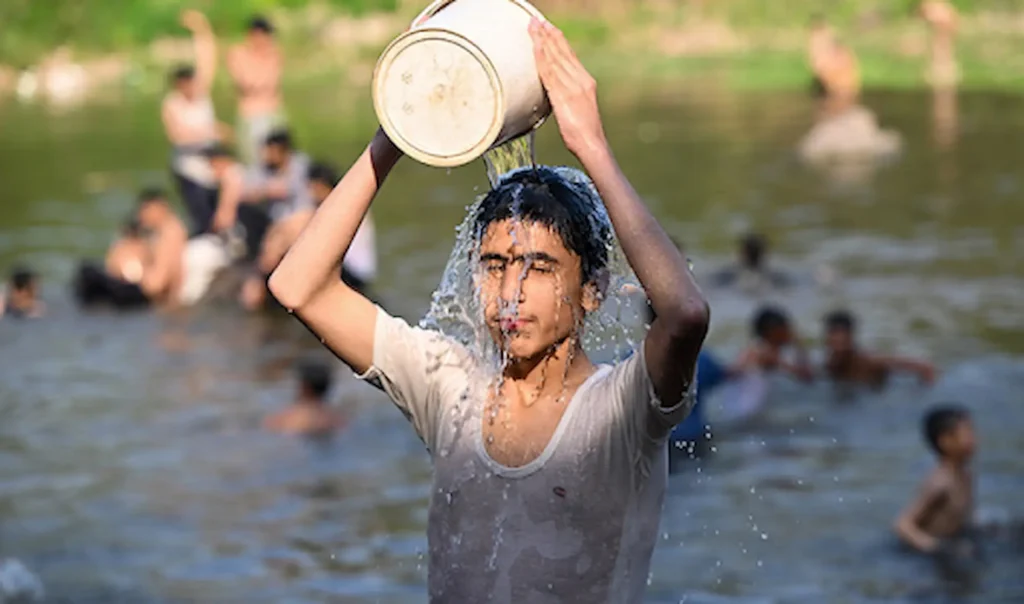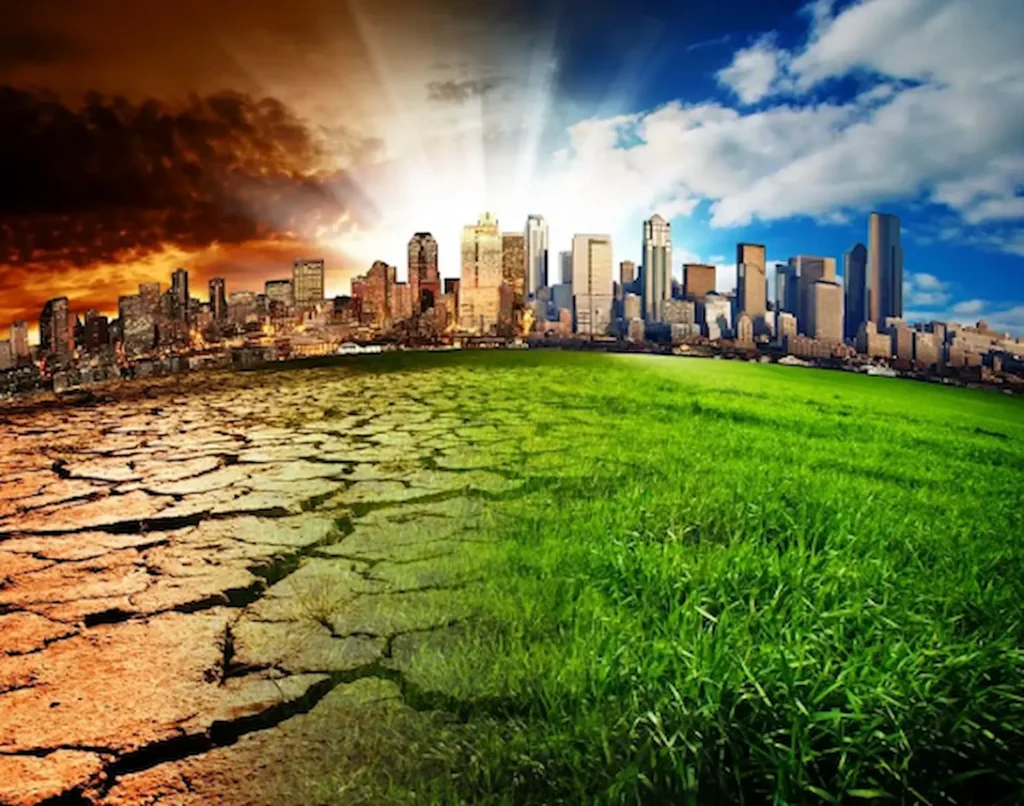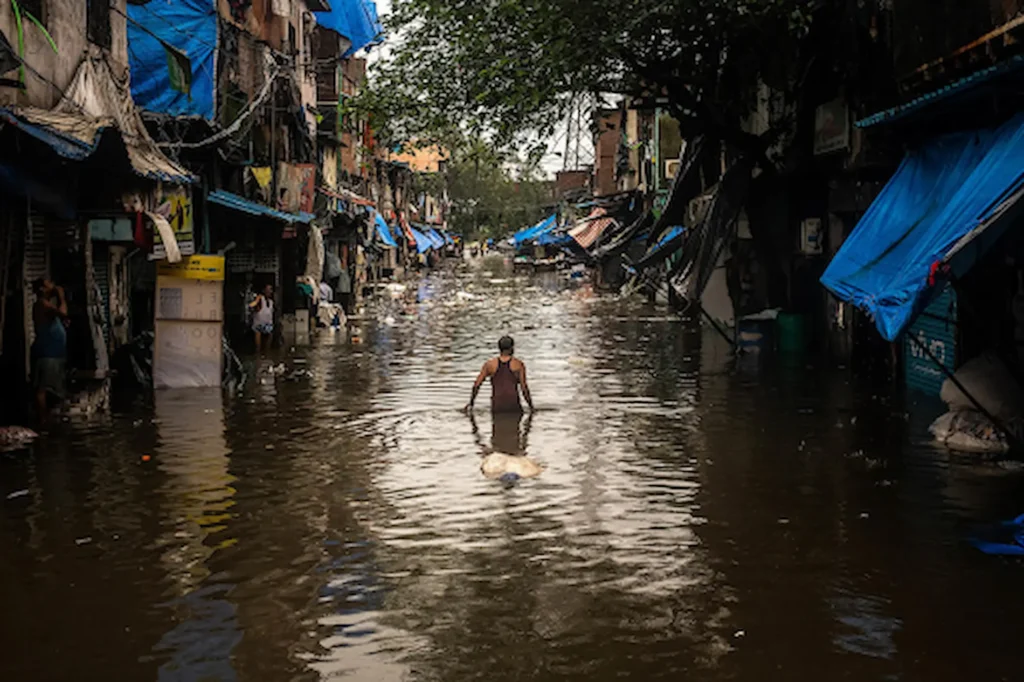The summer of 2025 has brought a terrifying reminder of how real and dangerous the climate crisis has become. Pakistan has recorded temperatures exceeding 45°C, setting off alarms not only within the country but across the globe. This is not an isolated event — it is part of a growing global heatwave crisis that’s intensifying with each passing year. As climate change accelerates, extreme weather patterns like this are expected to become more frequent and more severe.
According to recent reports by the UN weather agency, the record-breaking temperatures in Pakistan are among the highest in South Asia this year. With millions affected, including vulnerable communities, farmers, and city dwellers, the country now faces growing health risks, power shortages, and a higher risk of wildfires and drought.
What Is Causing This Extreme Heat in Pakistan?
The main driver behind Pakistan’s extreme heat is the intensifying climate crisis. Global greenhouse gas emissions, especially carbon dioxide, have warmed the Earth’s atmosphere over decades. As a result, South Asia has become a hotspot for heatwaves, with Pakistan bearing much of the burden.

Urban areas are particularly at risk due to the heat island effect — where concrete and asphalt trap more heat, raising city temperatures several degrees higher than in rural areas. This makes urban gardening not just a sustainable practice but a necessity for climate adaptation. Read more about urban gardening solutions for hot climates to understand how cities can cool themselves naturally.
The Impact of Heatwaves on Human Health and Ecosystems
Extreme temperatures over 45°C are dangerous and sometimes fatal. In many parts of Pakistan, people suffer from heatstroke, dehydration, and worsening of chronic diseases. Hospitals are overwhelmed during such climate emergencies, and outdoor workers are especially at risk.
Beyond human health, the environment also suffers. Forests are drying out, and biodiversity is declining as wildlife struggles to survive in overheated ecosystems. Entire species may migrate or disappear if this pattern continues unchecked.
How This Fits into the Global Climate Crisis
Pakistan’s record heat is not an isolated event. Across Europe, Asia, and North America, 2025 has seen temperature anomalies far above historical averages. This aligns with the global trend of rising temperatures and increasing climate volatility.

These events serve as urgent reminders of the need for international cooperation and immediate climate action. The transition to renewable energy sources is no longer optional — it is essential for survival. Clean energy can significantly reduce emissions and slow the pace of global warming.
How Are South Asian Countries Coping with the Climate Emergency?
Pakistan is not alone. Neighboring countries like India, Bangladesh, and Nepal are also experiencing record-breaking temperatures. These nations are trying to adapt through early warning systems, heat action plans, and community awareness programs. However, the pace of adaptation is often slower than the pace of climate change itself.

In many rural areas of Pakistan, where air conditioning is rare and access to healthcare is limited, people are particularly vulnerable. Children and the elderly face the greatest health risks, and in cities, power grids are under stress due to rising demand for cooling systems.
This crisis reveals the urgent need for climate education at all levels of society. At Green Zone Hub, our climate education resources help build awareness among students, educators, and families so that communities are better prepared to respond to future heatwaves and climate events.
Why Local Action Matters More Than Ever
Global climate change may seem like a large-scale issue, but local action is essential to slowing it down. In Pakistan and other high-risk countries, communities can take immediate steps to reduce their environmental impact and improve resilience. These include water conservation, switching to solar energy, and using green infrastructure to cool down urban spaces.
At Green Zone Hub, we highlight how sustainable living can be applied practically in both rural and urban environments. From growing your own food through urban gardening to using renewable energy and reducing single-use plastics, every action counts.
The Role of Policy and International Cooperation
The climate emergency cannot be handled by individuals alone. Governments and institutions need to respond with bold policies. In Pakistan, this means stronger enforcement of environmental regulations, investment in clean energy, and international partnerships for climate adaptation and disaster relief.

The global community must also step up. Nations that contribute the most to carbon emissions have a responsibility to support vulnerable countries like Pakistan in building climate resilience. The science is clear: unless emissions are drastically cut and ecosystems are protected, record-breaking heatwaves like this will become more frequent and devastating.
Is This the New Normal?
Experts warn that the 45°C heatwave in Pakistan may no longer be considered extreme in the coming years. If global temperatures continue to rise, 50°C summers could become routine in many South Asian regions. This is a stark reality check for humanity.
But there is still hope. If individuals, communities, and governments work together, it is possible to limit the most dangerous effects of climate change. Education, innovation, and sustainability must guide every decision we make — from what we build to how we live.
Why Choose Green Zone Hub?
At Green Zone Hub, we believe that informed communities are powerful communities. Our platform connects you to the latest insights in climate change, sustainability, renewable energy, urban gardening, and biodiversity conservation. We combine science-based resources with practical solutions to help people and cities build a more resilient future.
Conclusion
Pakistan’s 45°C heatwave is not just a national emergency; it’s a symptom of a larger global crisis. As the planet heats up, extreme weather will become the norm unless urgent action is taken. We must treat this heatwave as a warning, not just a news headline. Governments, businesses, and citizens must work together to mitigate the effects of climate change before it’s too late.
FAQs
What is the cause of Pakistan’s 45°C temperature in 2025?
The primary cause is the global climate crisis, driven by greenhouse gas emissions and environmental degradation.
Are heatwaves becoming more common in Pakistan?
Yes, due to climate change, extreme heat events are increasing in frequency and severity.
How can individuals protect themselves during heatwaves?
Stay hydrated, avoid outdoor activity during peak heat hours, and keep living spaces cool using natural or efficient cooling methods.
What role does renewable energy play in climate change mitigation?
Renewable energy reduces dependence on fossil fuels, cutting down emissions that drive global warming.
Where can I learn more about sustainable living practices?
You can explore our Sustainable Living section for practical tips and guides.
How dangerous is a 45°C temperature for human health?
Temperatures above 45°C can be life-threatening, especially for the elderly, children, outdoor workers, and people with pre-existing health conditions. Risks include heatstroke, dehydration, and even organ failure in extreme cases.
Is climate change the only reason for heatwaves in Pakistan?
While natural weather patterns play a role, the primary driver of the increasing intensity and frequency of heatwaves is human-induced climate change. Urbanization and deforestation have also worsened the situation.
How can urban gardening help in heatwave-affected areas?
Urban gardening reduces local temperatures through natural shade and moisture release. It also helps improve air quality and food security. Learn more in our Urban Gardening section.
What is the government of Pakistan doing to address the climate crisis?
The government has initiated tree-planting drives, solar energy programs, and early warning systems. However, implementation challenges remain, and stronger policy actions are needed.
Can planting trees reduce the impact of heatwaves?
Yes, trees provide shade, reduce surface temperatures, and help cool the surrounding environment naturally. They are a key tool in both urban and rural climate adaptation strategies.
